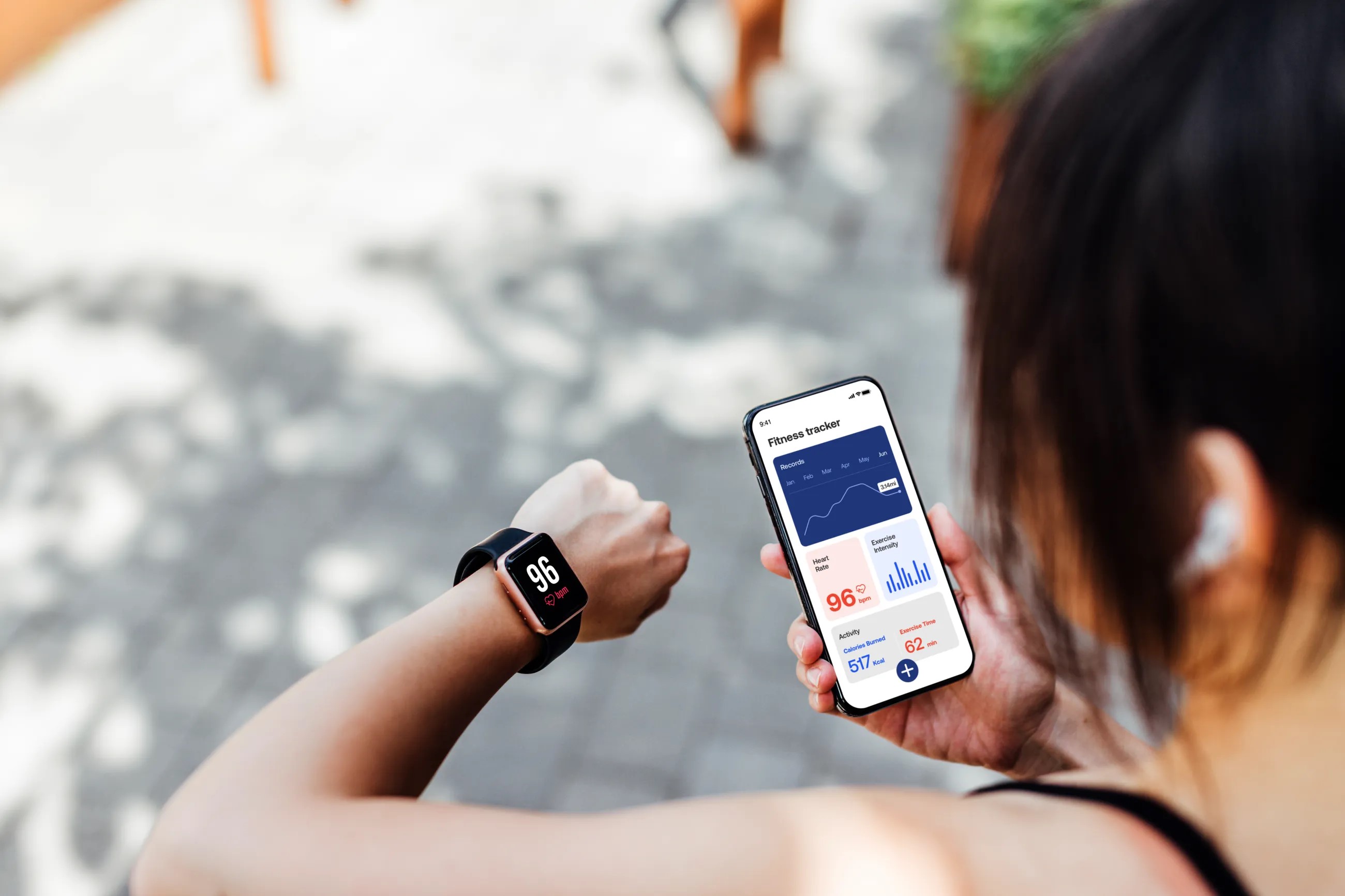
Artificial Intelligence (AI) is revolutionising the sports industry by enhancing player performance, optimising training and injury prevention, accelerating recovery times, and refining coaching and game strategies. Additionally, AI is transforming talent identification, revolutionising fan engagement, and altering the way sports are consumed globally. This revolution is being enabled by huge amounts of data collected from wearables, cameras and sensors on the field, court and sports track, as well as within equipment like balls, bats, and rackets.
Rapid development of AI is enabling advances in machine learning and algorithm development to leverage that data, enabling in-depth analysis of player performance and new insights. The AI in sports market, which utilises generative AI and predictive analytics is projected to grow significantly from US$1 billion in 2024 to US$2.6 billion in 2030.1

How are sports being transformed by innovation and technology?
We are now in the midst of a wider technological revolution in sports. Teams and sports organisations are leveraging AI to gain a competitive advantage. This is driving the innovation that we are seeing, with sports franchises partnering up with tech companies. Even at the Wimbledon Championships, one of the most traditional sporting venues, we will see for the first time in 147 years human line judges replaced by electronic line calling (ELC) technology.
Data is being captured, analysed and applied in multiple ways in football (soccer). Apart from Video Assisted Referee (VAR), technology is used to gather data on football matches and training sessions through multiple mechanisms, including performance analysis software such as SBG MatchTracker, GPS (Global Positioning Systems) data from wearable technology providers such as Catapult, which provide detailed analytics on athlete performance via capturing movement patterns, recovery, and strain, or from video technology provided by startups like BEPRO, which measure and aim to improve team performance.
Liverpool Football Club used data, AI and analytics to turn them into a UEFA Champions League and English Premier League-winning side. Football fans will be familiar with Jürgen Klopp, Virgil Van Dijk, and Mo Salah but not many have heard of Ian Graham. He can be described as a technologist who has arguably been the true architect of Liverpool’s recent success. A theoretical physicist by training, Graham was the club’s Director of Research. His team’s AI models and algorithms that used data collected on Liverpool and other teams was instrumental in Jürgen Klopp’s appointment as manager in 2015. Klopp had taken Borussia Dortmund in the German league to second place in 2013/14 but the club finished a disappointing seventh in the 2014/15 season. Data analysis intimated that Borussia should have finished second statistically but were simply unlucky in a number of key games. The models also suggested the signings of various star players including Philippe Coutinho and Mo Salah, and that Salah and Robert Firmino would link up very well. In contrast to Manchester United, an AI data-based approach enabling consistent recruitment over time to replace the likes of Coutinho and Firmino enabled a seamless transition from a long standing, successful manager to new manager, Arne Slot, delivering another Premier League title in his first season.
Another example is how Belgian and Manchester City star player Kevin De Bruyne used data and analytics as a key part of his contract renegotiations, without using an agent. De Bruyne reportedly employed Analytics FC, a specialist sports analytics company, to pull analytical data on how Manchester City’s team was set up for the future, including data points like the age profile of the squad, the number of playing minutes of those players by age, and the contracts of key players. The data also looked at past, present and projected future performances, and their relative importance to the team based on calculated contribution value. For attacking midfielders like Kevin De Bruyne this would have included an analysis of actual and expected goals, assists and chances created. The data-driven contract negotiation led to a four-year contract extension rumoured to be worth £83 million at the time, and which has ultimately proved to be his last contract at Manchester City.
Elsewhere, the net for casting football talent has become much wider thanks to machine learning. Footbao’s app enables Neymar wannabes to upload a clip of themselves playing or showing off a skill from their phone, which is filtered by AI to match specific requirements from football clubs, with talents signed up by Brazilian clubs Corinthians and Flamengo.

Apart from individual sports, AI is also being deployed at major sporting events like the Olympic Games; Paris 2024 had 15 tech partners that managed equipment and tech resources. AI was used to produce customised highlights videos for broadcasting and social media in multiple formats and languages. Sustainability was also a key objective at the Games; energy consumption was monitored in real-time and will be used to inform future resource planning.2
Technology has changed how sports is consumed
Technology is also transforming and driving viewing preferences and offering enhanced insights. Powered by AI, sports platforms are using data to analyse fan behaviour and preferences to inform and better customise content and recommendations.
While sports has always been one of the most popular programming on broadcast TV, a real explosion in viewing figures has been driven by streaming. It’s forecasted that by 2025, 118 million people in the US will be streaming their favorite sports (a more than 70% increase on 2021), according to EMARKETER.3 Twitch, a live streaming service for gaming and eSports, streamed almost 21 billion hours of video content in 2024. To re-engage younger generations, broadcasters will need to provide a much more immersive, interactive viewing experience by leveraging the key technologies of 5G, augmented and virtual reality, the cloud, and streaming.
Generation Z (youngsters who have lived with tech all their lives) prefer shorter content formats, and are more likely to watch Kevin De Bruyne ‘playing’ in EA Sports FC 25 gaming videos than a real world 90 minutes match. And more recently, US sports fans have welcomed Prime Vision, Amazon Prime’s Thursday night NFL alternate real-time feed, where they are able to see an enhanced view of the field, additional insights and player statistics.
The cloud, streaming, augmented reality, virtual reality, and 5G are all converging to enable the ‘gamification’ of the football experience. Having a 360-degree viewing angle, ‘virtually’ sitting in the best seats in the house, using a split screen to view statistics or having a shared view with friends all adds to the gamifying experience. The key advantage of 5G versus 4G is latency i.e, how fast the network responds to a request. In theory, latency can come down to one millisecond with 5G (around 30 to 50 milliseconds with 4G currently). 5G is also far more efficient in data transmission, with about three to five times the spectral efficiency of 4G, which enables much cheaper data and streaming. It also allows a 5G base station to connect with significantly more points or devices, reducing the chance of losing (data) reception or signal.
Underpinned by Moore’s Law, cloud computing ─ and now AI
As in most professional sports, small efficiency gains, or marginal improvements can bring material rewards. Underlying all of that are the two founding themes in technology: firstly Moore’s Law (is enabling tech to get smaller, cheaper, faster, and better, providing more efficient tools for measurement and digitalisation, and second, the accelerating shift to cloud computing. Even as traditional Moore’s Law has become more challenging, new semiconductor manufacturing techniques under TSMC’s banner of ‘More than Moore’ have continued to drive superior performance at lower power and cost.
Cloud infrastructure has democratised and proliferated cheap compute, enabling start up software companies like BEPRO, Analytics FC, Playsight Interactive and Zone7 to focus adding value to sports analytics, measurement, data quality and algorithms without having to buy expensive servers and storage themselves. With the advent of AI, hyperscalers are becoming the delivery platforms of the latest AI innovations to be harnessed across different industries, with sports often at the cutting edge.
Innovation and sports are a winning partnership
Technology’s influence in football is increasing, with the extent and pace of that transformation supported by the long-term secular drivers of tech adoption through Moore’s Law and the accelerating shift to the cloud. These two key underlying themes are driving AI, which is in turn reliant on data analytics, cloud infrastructure and machine learning. With its wide exposure, sports is a key area where we are seeing tech’s disruptive power and continuing innovation permeating and improving our lives and providing solutions. This is helping to drive share gains for select companies that are at the forefront of integrating AI and innovation into their products and solutions.
1 MarketsandMarkets AI in Sports Report, November 2024.
2 Olympics.com, AI and tech innovations at Paris 2024: A game changer in sport; 20 July 2024.
3 EMARKETER, More than 100 million people will watch live sports via digital this year, 12 November 2024.
Machine learning: a branch of artificial intelligence and computer science, which uses data and algorithms to imitate the way that humans learn, gradually improving its accuracy.
Moore’s Law: predicts that the number of transistors that can fit onto a microchip will roughly double every two years, therefore decreasing the relative cost and increasing performance.
Spectral efficiency: the amount of data transmitted over a given spectrum or bandwidth with minimum transmission errors.
These are the views of the author at the time of publication and may differ from the views of other individuals/teams at Janus Henderson Investors. References made to individual securities do not constitute a recommendation to buy, sell or hold any security, investment strategy or market sector, and should not be assumed to be profitable. Janus Henderson Investors, its affiliated advisor, or its employees, may have a position in the securities mentioned.
Past performance does not predict future returns. The value of an investment and the income from it can fall as well as rise and you may not get back the amount originally invested.
The information in this article does not qualify as an investment recommendation.
There is no guarantee that past trends will continue, or forecasts will be realised.
Marketing Communication.